
About the book
This workbook is a guide to help you to choose how to live your life day-by-day and to learn skills that will help you to hang in there with those loud obsessions so you can do what truly matters to you.
In the first section, you will learn the basics about OCD and researched-based treatments, such as Exposure Response Prevention (ERP) and Acceptance and Commitment Therapy (ACT). Next, you will be introduced to the “Choice Point”, a useful tool that will show you step-by-step how you get hooked on those obsessions and the costs of continuing to do the same thing over and over in your life. After learning about the price of living in safety country, as I call it, you will be invited to step back and check in with yourself about what you actually care about. In the rest of the book you will learn powerful skills to unhook from your obsessions, including values-guided exposure exercises, so that you can move forward with the stuff that is important to you.


Message for teens
Every day you wake up, so does your mind. And with it, the annoying, uninvited, and unsolicited obsessions wake up too. You’re not alone! Many teenagers wrestle with those obsessions; they vary from being kind of bothersome to really disturbing, and they can boss you around, up and down, left to right, and back and forth.
These obsessions come along with an automatic rush of fear and discomfort, and an unpleasant feeling that can push you to do all sorts of things that take you far away from the stuff that really matters to you.
I know it would be nice to have a switch that you can just flick and make the obsessions go away so that you can relax, be stress-free, and have nothing to worry about, but sadly it doesn’t work like that. Wherever you are, your mind is there with you, and the obsessions come along with it. But—and it’s a big but—those pesky obsessions don’t have to rule what you do with your life! In fact, the obsessions are not the problem; it’s only when you put on your running shoes so you can run to Escape City, or buy tickets to Compulsion City, or stop doing what’s important and meaningful in your life, that things get rocky.
This book is a gamechanger! I have put it on my “must-read” list for my teen clients, their parents, and for any therapist working with individuals with OCD. This gem of a book is engaging, easy-to-read, and contains essential research-based tools to help teens recognize how to use their own strength, values, and their power of choice as weapons against the pain and suffering caused by OCD. I love that it can be used by teens and their families on its own or as a companion guide to use with a therapist.
This book should be on every OCD Therapist’s shelf!
This workbook is such a wonderful addition to anyone trying to help a teen with OCD. It provides a simple and engaging way to view OCD and offers concrete ways to work on it. It is definitely a book I will be recommending!

Dear Parent or Caregiver,
How many times have you thought, “It’s exhausting dealing with OCD” and wondered, “How did this happen?” How many times have you felt like screaming because your teen is asking you to do something for him over and over? How many times have you struggled because of an OCD episode at home? How many times has your mind told you, “It’s my fault?”
If your teen is dealing with OCD, or you suspect that’s the case, I know that it’s not easy for you and it’s not easy for your teen. It’s not your fault and it’s not your teen’s fault either. This workbook will help your teen to learn how to handle those pesky obsessions and move forward in life!
The chapters in this book are focused on specific research-based skills: Acceptance and Commitment Therapy (ACT) and Exposure Response Prevention (ERP). These skills will help your teen to catch those obsessions, hang in there with the fear that comes with them, and choose how to continue moving forward with what matters in their day-to-day life.
This workbook is about encouraging your teen to choose when to face his fears, how to do it, and ultimately, how to handle fear, anxiety, and discomfort as part of life. And as I encourage your teen to choose, I encourage you to do the same: remember your values as a parent and choosehow to enjoy the sweet moments that come along with parenting your teen!


What’s inside?
Chapter: the basics of OCD
Chapter: the basics of treatment and this workbook
Chapter: why do I have to deal with OCD?
Chapter: why do I have to deal with fear?
Chapter: getting to know your OCD
Chapter: getting familiar with the choice point!
Chapter: unwanted annoying thoughts
Chapter: unsolicited bizzare images
Chapter: uninvited urges
Chapter: buying tickets to compulsion city!
Chapter: running as fast as you can to avoidance city!
Chapter: asking for accomodations
Chapter: checking the costs of getting hooked
Chapter: choosing the stuff you care about!
Chapter: doing the stuff you care about!
Chapter: Checking your fightonometer when doing stuff you care about
Chapters
Worksheets
Pages
Super-cool illustrations
Get 20 mindfulness exercises
ready-to-go





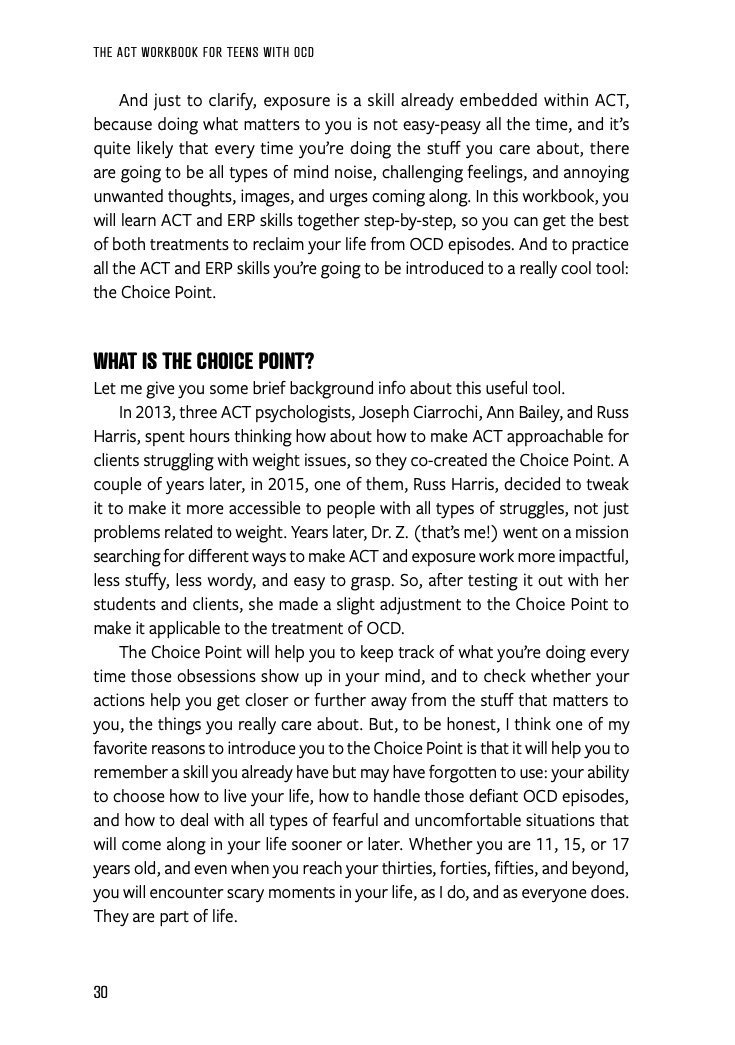

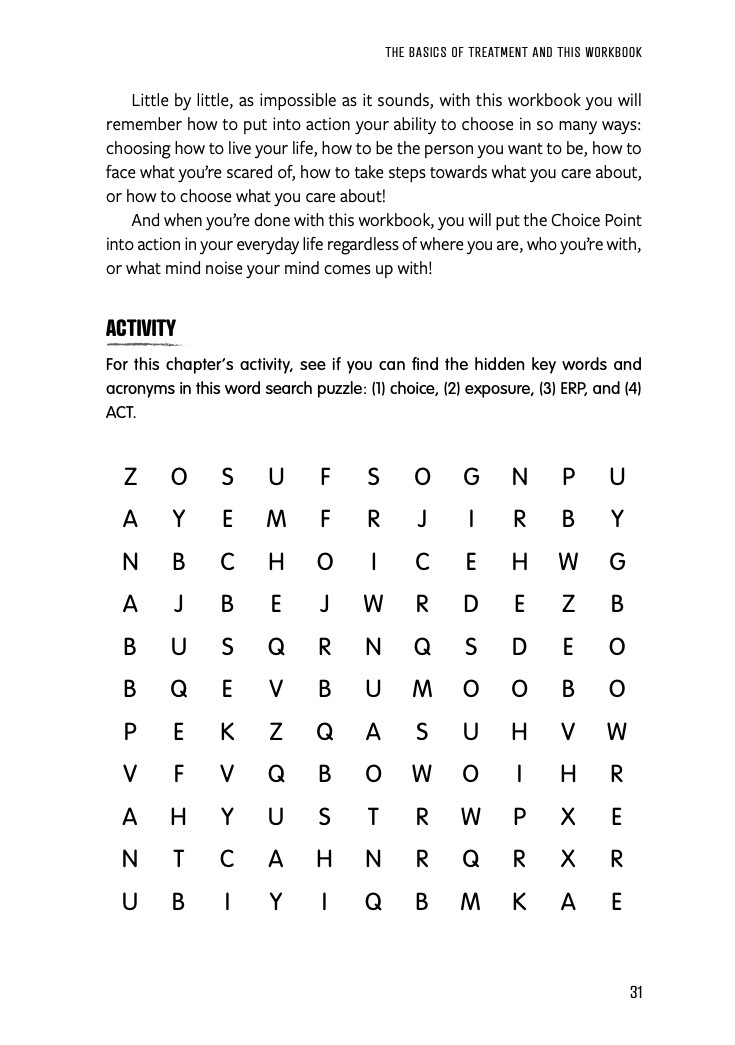

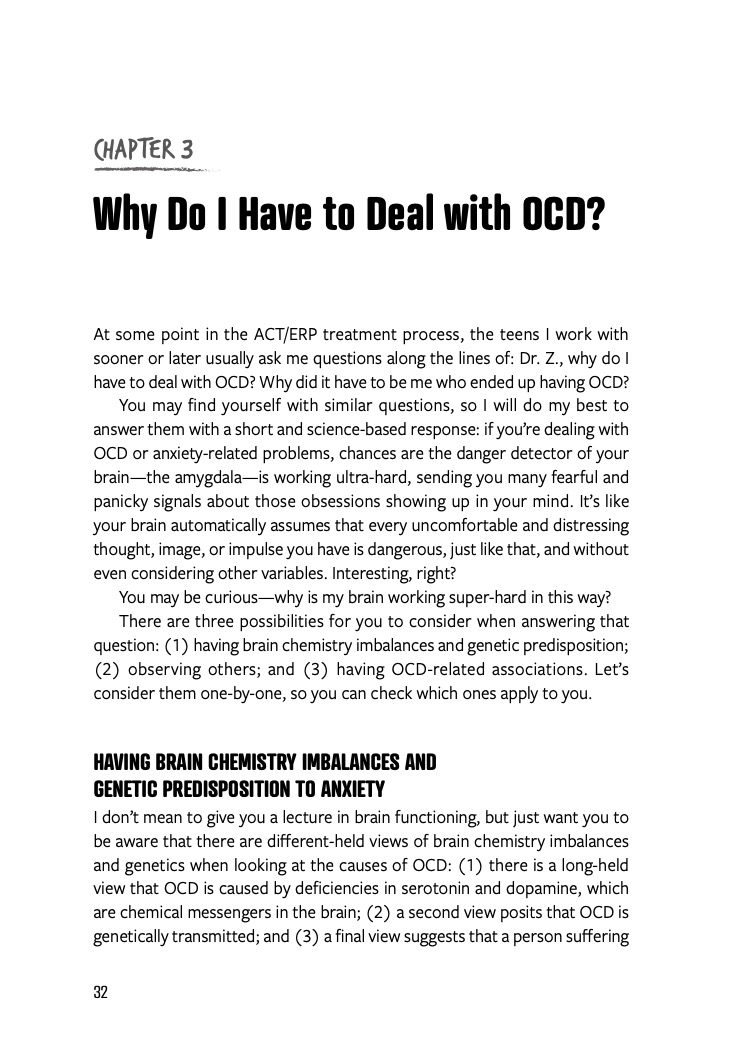



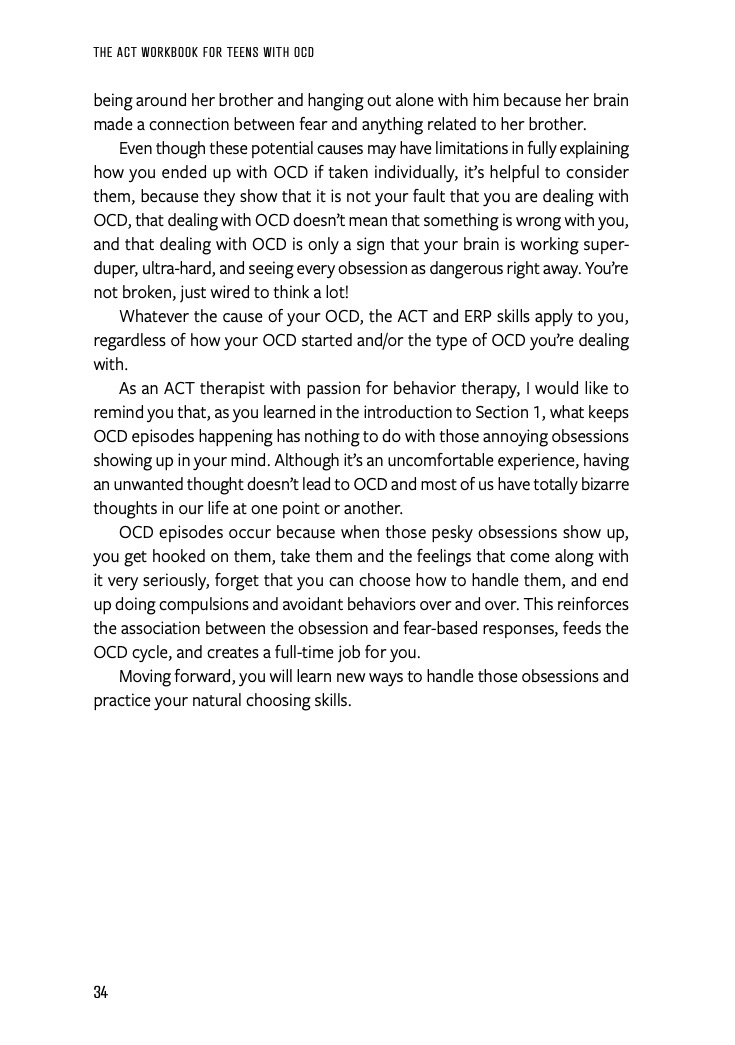

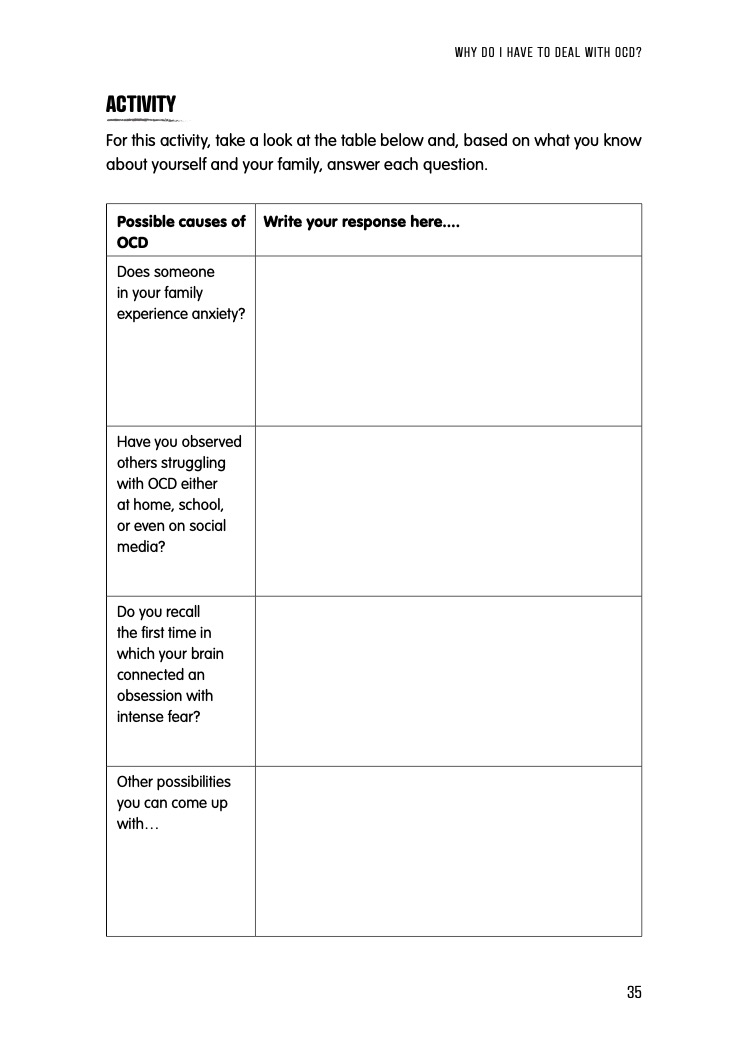
About Dr. Z.


Patricia E. Zurita Ona, Psy.D., “Dr. Z,” is a clinical psychologist specialized in working with children, adolescents, and adults struggling with OCD, anxiety, and emotion regulation problems.
Dr. Z is the founder of the East Bay Behavior Therapy Center, a boutique therapy practice, where she runs an intensive outpatient program integrating Acceptance and Commitment Therapy (ACT) and Exposure Response Prevention (ERP) to support clients getting stuck from obsessions, figure out what they care about, and do stuff that matters to them. Dr. is also the creator of the online class ACT beyond OCD that blends ACT & ERP.
Dr. Z. is a Fellow from the Association of Contextual Behavioral Science (ACBS), member of the OCD San Francisco Bay Area (affiliate from the International OCD Foundation), and a chair of committee for the Anxiety and Depression American Association (ADAA).








